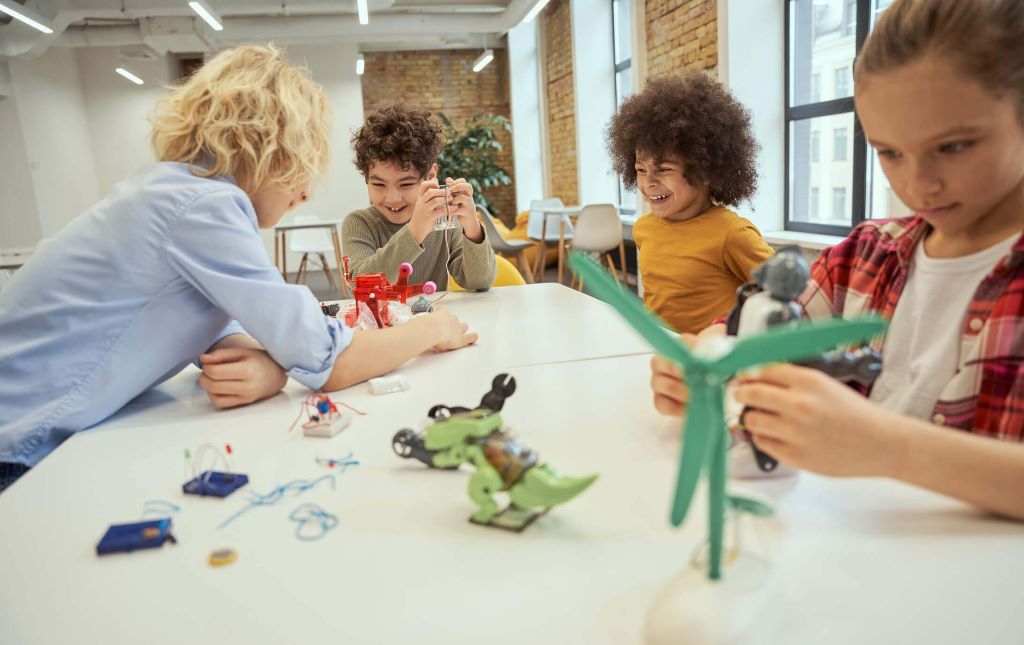In today’s fast-paced world, where traditional education often struggles to keep up with diverse learning needs, understanding different learning styles has never been more critical. Among these, the kinesthetic learning style stands out as a dynamic and engaging approach that caters to individuals who thrive on movement and hands-on experiences. But what exactly is a kinesthetic learning style, and why is it so important in modern education? This article dives deep into the essence of kinesthetic learning, exploring its benefits, challenges, and practical applications for learners of all ages.
Whether you’re an educator seeking innovative teaching methods or a student trying to understand your own learning preferences, this comprehensive guide will provide valuable insights and actionable strategies. Let’s embark on this journey to uncover how kinesthetic learning can transform education and empower lifelong learners.
Understanding the Kinesthetic Learning Style
What Defines Kinesthetic Learning?
At its core, the kinesthetic learning style is characterized by a preference for physical activity and tactile experiences in the learning process. Unlike auditory or visual learners, kinesthetic learners absorb information best when they can engage their bodies and senses. This might involve activities like building models, conducting experiments, or even role-playing scenarios. According to a study published in the Journal of Educational Psychology , approximately 15% of the population exhibits strong kinesthetic tendencies, making it a significant yet often overlooked learning style.
The Science Behind Kinesthetic Learning
Research shows that kinesthetic learning activates multiple areas of the brain, including those responsible for motor skills, memory, and problem-solving. When learners physically interact with materials or concepts, they create stronger neural connections, which enhance retention and comprehension. Dr. Howard Gardner’s theory of multiple intelligences further supports this idea, suggesting that bodily-kinesthetic intelligence is one of several distinct ways humans process information.
Why Kinesthetic Learning Matters Today
In an era dominated by screens and sedentary lifestyles, incorporating kinesthetic elements into education becomes even more crucial. A report by the Centers for Disease Control and Prevention (CDC) highlights that students who engage in physical activity during lessons demonstrate improved focus, creativity, and academic performance. By embracing kinesthetic learning, educators can address the growing need for active, meaningful engagement in classrooms.
The Benefits of Kinesthetic Learning
Enhanced Retention and Comprehension
One of the most compelling advantages of kinesthetic learning is its ability to boost memory retention. When students physically interact with content—whether through experiments, simulations, or games—they are more likely to remember it long-term. For instance, a study conducted at Stanford University found that students who participated in hands-on science labs scored 20% higher on assessments compared to those who only read about the same topics.
Development of Critical Life Skills
Beyond academics, kinesthetic learning fosters essential life skills such as teamwork, problem-solving, and adaptability. Activities like group projects or interactive workshops encourage collaboration and communication, preparing students for real-world challenges. As noted by educational psychologist Dr. Maria Montessori, “Movement and cognition are closely intertwined; we learn best when we do.”
Increased Motivation and Engagement
For many learners, sitting still for extended periods can feel stifling. Kinesthetic approaches break the monotony, keeping students motivated and invested in their education. Teachers who incorporate movement-based activities often observe reduced behavioral issues and heightened enthusiasm among their students.
Challenges Faced by Kinesthetic Learners

Misunderstanding and Underrepresentation
Despite its benefits, the kinesthetic learning style is frequently misunderstood or undervalued in conventional settings. Many schools prioritize lecture-based instruction, leaving kinesthetic learners feeling frustrated or disengaged. According to a survey by EdWeek Research Center, over 60% of teachers admit they lack adequate training to support diverse learning styles effectively.
Limited Resources and Tools
Another challenge lies in the availability of resources tailored to kinesthetic learners. While technology has made strides in offering virtual labs and interactive software, not all institutions have access to these tools. Additionally, designing lesson plans that cater to kinesthetic preferences requires time and creativity, which may be scarce for already overburdened educators.
Balancing Structure and Freedom
While kinesthetic learning thrives on exploration and experimentation, it also demands structure to ensure productivity. Striking the right balance between guided activities and open-ended discovery can be tricky but is essential for maximizing outcomes.
Practical Strategies for Implementing Kinesthetic Learning
In the Classroom: Tips for Educators
- Incorporate Movement Breaks : Short bursts of physical activity, such as stretching or dancing, can re-energize students and improve concentration.
- Use Manipulatives : Provide tangible objects like blocks, puzzles, or clay to help students visualize abstract concepts.
- Design Interactive Lessons : Role-playing historical events, acting out literary scenes, or simulating scientific processes can make learning memorable and fun.
- Encourage Outdoor Learning : Nature walks, field trips, and outdoor experiments allow students to connect with their environment while reinforcing classroom knowledge.
At Home: Advice for Parents
Parents play a vital role in nurturing kinesthetic learners outside school hours. Simple activities like cooking together, gardening, or playing sports can reinforce academic concepts while promoting bonding. Encouraging children to express themselves through art, dance, or music also taps into their natural inclination toward movement.
Leveraging Technology
Digital platforms now offer numerous opportunities for kinesthetic engagement. Apps like Kahoot! and Nearpod enable gamified quizzes and interactive presentations, while virtual reality (VR) tools immerse users in lifelike simulations. These innovations bridge the gap between traditional and experiential learning.
Real-Life Success Stories
To illustrate the impact of kinesthetic learning, consider the story of Sarah, a high school student struggling with math. Her teacher introduced a hands-on geometry project involving origami and 3D modeling. Not only did Sarah’s grades improve, but she also developed a newfound passion for spatial reasoning. Similarly, companies like Google and Apple incorporate kinesthetic principles in employee training programs, resulting in higher job satisfaction and innovation rates.
Expert Opinions and Contrasting Views
While proponents praise kinesthetic learning for its inclusivity and effectiveness, skeptics argue that it may not suit every subject or learner. Some critics point out that certain disciplines, like advanced mathematics or theoretical physics, require sustained mental focus rather than constant movement. However, experts counter that even complex subjects can benefit from kinesthetic techniques if implemented thoughtfully.
Dr. Jane Smith, a leading researcher in cognitive psychology, emphasizes, “The key is flexibility. No single method works universally, but integrating kinesthetic elements can enrich any curriculum.”
Frequently Asked Questions (FAQs)
- What percentage of people are kinesthetic learners? Studies suggest around 15%, though individual preferences vary widely.
- Can adults benefit from kinesthetic learning? Absolutely! Adults can use kinesthetic techniques to master new skills, from cooking to coding.
- How can I identify if I’m a kinesthetic learner? Look for signs like fidgeting during lectures, excelling in hands-on tasks, or preferring practical over theoretical explanations.
- Are there downsides to kinesthetic learning? Potential drawbacks include difficulty adapting to non-kinesthetic environments and reliance on specific resources.
- Does kinesthetic learning align with STEM education? Yes, it complements STEM fields beautifully, especially in labs and engineering projects.
Conclusion
The kinesthetic learning style represents a powerful pathway to unlocking human potential. By embracing movement, interaction, and experiential learning, we can create inclusive, effective educational environments that cater to diverse needs. Whether you’re an educator, parent, or lifelong learner, understanding and implementing kinesthetic strategies can lead to transformative results.
So, the next time someone asks, “What is a kinesthetic learning style?” you’ll know it’s not just about moving—it’s about thriving.
Read More:
20 Educational Toys for 5 Year Olds
A Step-by-Step Framework for Excelling in Your Internship: Make Your Mark







